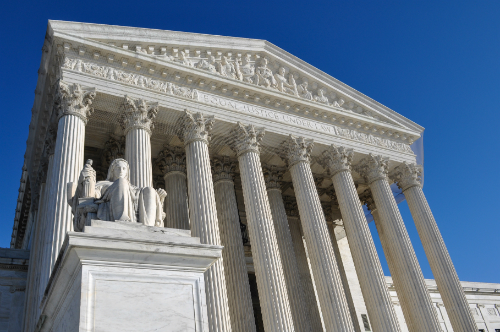Supreme Court Gives Trump His First Partial Victory for his Travel Ban

The U.S. Supreme Court issued a preliminary opinion today temporarily allowing part of Trump’s travel ban to take effect until a final decision is made later this year, perhaps by October. Many feared an end to the string of victories against the travel bans as the second ban worked its way up to the Supreme Court, based on the fact that the Supreme Court, with its new conservative Justice Neil Gorsuch, once again now holds a conservative majority.
Let’s be clear on the scope and effect of today’s opinion. The opinion only addresses two issues:
(1) Will the Supreme Court listen to and make a final decision on Trump’s travel ban? A: Yes.
Today’s opinion answered this question in the affirmative (which means they granted “certiorari”). The Supreme Court only listens to cases it has an interest in. It is not required to make final decisions on cases. If the Supreme Court declines to hear a case, the lower court’s opinion becomes the final word. This process of formally accepting or rejecting a case is called granting or denying “certiorari” (aside: Courts/lawyers like Latin, it makes them feel more sophisticated).
(2) During the period before a final decision is made, will the Court allow the travel ban to take effect? A: Yes, part of the ban can take effect now.
The Court disagreed with the lower federal courts that banned all of the travel ban, and have now allowed parts of the travel ban to take effect until a final decision is made. This phase of litigation is titled the “preliminary injunction phase”. A preliminary injunction halts the implementation of a law because the legality of the law has been challenged in the Courts. Courts will not automatically grant a preliminary injunction, instead they consider the harm if a law is implemented or not implemented, and they weigh each parties’ likelihood of ultimate success.
Two Sections of the Ban Now Go Into Effect in a Limited Way.
The Supreme has allowed two sections of the travel ban to take effect until a final decision is made. Section 2(c) of the travel ban suspends entry of immigrants from 6 countries (Iran, Libya, Somalia, Sudan Syria and Yemen) for 90 days. The Supreme Court held that the government can suspend these entries for now for nationals from these countries who “lack any bona fide relationship with a person or entity of the United States.”
Similarly, section 6(a) halts the admission of any refugees into the country for 120 days. The Court ruled that this section can be implemented for now against any refugee who “lacks a bona fide relationship with a person or entity of the United States.”
The rest of the injunction, halting implementation of the travel ban, remains in effect.
This development is concerning because it may foreshadow a final decision by the Supreme Court to allow the travel ban to be implemented more fully.
Interestingly, the Court specifically asked both parties to brief (formally explain in writing) why section 2(c), restricting the entry of certain foreign nationals, did not become “moot” (which means no longer at issue) on June 14, 2017, 90 days after its implementation date. This raises a very logical question. If the stated purpose of the temporary ban is to have time to review and implement new procedures, hasn’t the government already had this time? While the ban was not in place, what if any relationship was there between allowing entry of these foreign nationals and the government’s ability to review and implement new procedures?
In summary, this is a somewhat small victory for Trump for now, but it is still deeply concerning for those of us who believe that all of the travel ban is an affront to the values this country was founded on.
For those who enjoy legal opinions and want the news directly from the source, Here is the full opinion by the Supreme Court on the Travel Ban.
